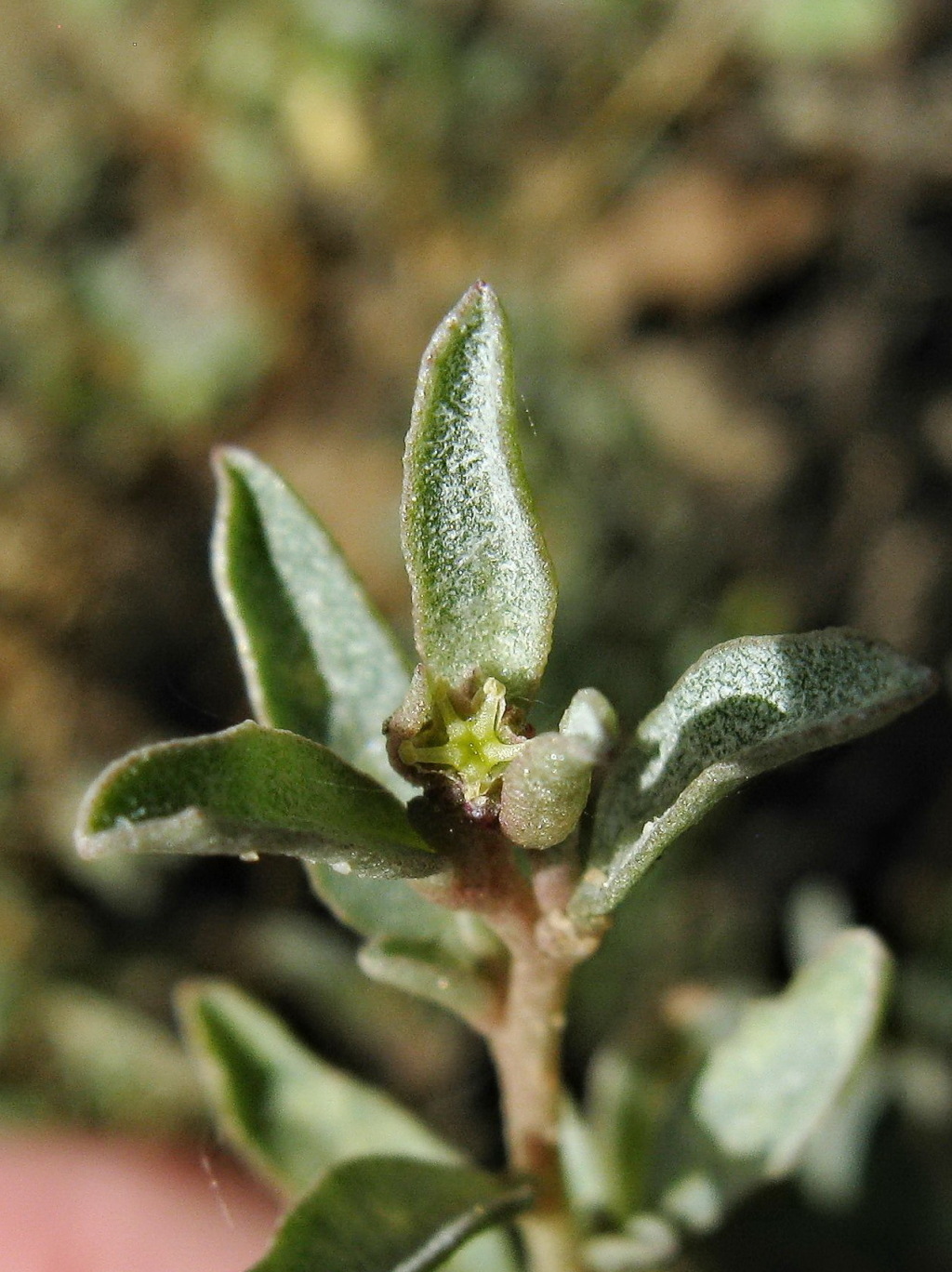Atriplex semibaccata
R.Br. Berry SaltbushProstrate, often mat-forming or semi-erect, usually deeply taprooted perennial, to c. 1 m diam., or c. 40 cm high, monoecious. Leaves shortly petiolate to subsessile, oblong-ovate to obovate, mostly 6–18(–25) mm long, 2–7(–15) mm wide, margins entire or with a few irregular teeth, glabrous or slightly mealy on upper surface, glistening grey-green or scurfy below. Male flowers in small clusters in upper axils, female flowers clustered in lower axils or sometimes subtending male flowers. Fruiting bracteoles subsessile, glabrous or sparsely mealy, fused from base to about midway, rhombic, 2–5 mm long and wide, entire or with a few small teeth, usually red and semi-succulent when ripe, becoming prominently 3–5-nerved when dry. Fruits Sep.-Dec.
LoM, MuM, Wim, VVP, VRiv, MSB, RobP, MuF, GipP, OtP, Gold, CVU, GGr, DunT, NIS, EGU, HSF. All States except NT. Introduced in Tas. and some mainland areas for grazing in saline areas. Common on basalt, often subsaline soils near Melbourne, sometimes weedy, rare in east. In north-western Victoria, usually a herb of lake margins and gypseous rises.
Victorian plants generally represent the southern Australian form in which the fruiting bracteoles become red and succulent. Some collections where succulence is not apparent may represent the northern Australian form (described as A. neurivalvis Domin). Atriplex semibaccata hybridizes with A. spinibractea in New South Wales and Queensland.
Walsh, N.G. (1996). Chenopodiaceae. In: Walsh, N.G.; Entwisle, T.J., Flora of Victoria Vol. 3, Dicotyledons Winteraceae to Myrtaceae, pp. 129–199. Inkata Press, Melbourne.
 Spinning
Spinning



